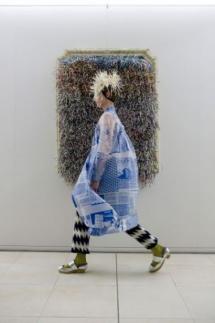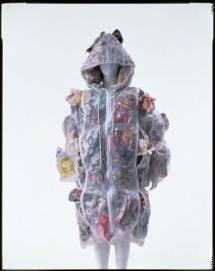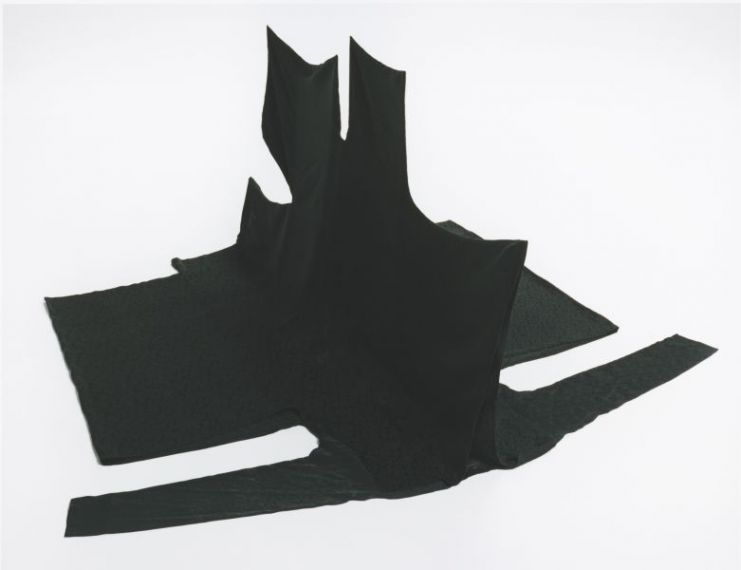| Japan on the mind with all the horrifying news on earth quakes, tsunami and the nuclear disaster dropping in continuously – should one read the title as a promising outlook? ‘Future Beauty – 30 years of Japanese fashion’, the latest show at the Munich Haus der Kunst arrived via the Barbican in London at least delivers a good reason to think about Japan in a very positive way and celebrate its unique strength.
The exhibition brought together through the cooperation of Barbican Art Gallery and the Kyoto Costume Institute, has been much praised in the UK and delivers a rare and astounding insight into Japanese modern culture. |
 |
| … a sensational eye and brain-opening view of Japanese fashion that anyone concerned with contemporary visual culture absolutely must see – whether they think they’re interested in fashion or not.
Beginning with the wave of great designers who revolutionised Japanese, and global, fashion in the 1980s – Issey Miyake, Yohji Yamamoto and Rei Kawakubo of Comme des Garçons – and moving up to date, Future Beauty |
|
| takes the twin poles of traditional Japanese aesthetics, ascetic formalism and raunchy phantasmagoria, and pushes them into extreme post-modernity. From Junya Watanabe’s billowing masses of concertinaed paper to Yamamoto’s gravity-defying, swirling hemlines, the works here (one hesitates to call them simply clothes) push structure to the maximum, with a magisterial disregard for the apparent limitations of materials and the human body. Yet the results never look perverse. That sense of intrinsic aesthetic rightness we think of as peculiarly Japanese is always present. … (excerpted from artdesk.com) |
 |
| My own impression at the show in Munich was exciting and inspiring. The several parts the exhibition is divided into are the four major sections ‘praise of shadows’, ‘flatness’, ‘innovation and tradition’, ‘cool Japan’ and certain separated designer sets. Each of the major sets has been dedicated its own dividing screen material, which changes according to the theme from hanging smooth cotton voile over black gauze veil to transparent plastic drapes creating a geometric maze. |  |
| Each of the major sets has been dedicated its own dividing screen material, which changes according to the theme from hanging smooth cotton voile over black gauze veil to transparent plastic drapes creating a geometric maze. The rooms are cut through by a central line, which is created by the row of fashion dolls wearing the fantastic pieces. Though only the room section entitled ‘flatness’ has some prints along the side walls, which show the surprising layouts of the cuts. A little bit more of that kind of surplus information might have made me even happier, some sketches, material experiments, information about the patterns, etc …. (as this extensive blogpost also shows). As having been in Japan I am quite familiar with some of their styles and patterns, but a general audience might be helped by that kind of extra information. Another thought raised when looking at images of the London show, which made me think, that there had been a bit more play in the arrangement and eventually even some extra pieces on display in London. But never mind – it is a show worth exploring. It is inspiring, touching .. and fun … | |
Video on BBC about the Barbican show
